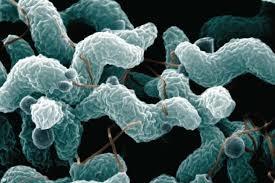Food Poisoning - What Consumers Need to Know
- During 2018 - 2019, Denbighshire's Food Safety Team investigated 261 confirmed cases of food poisoning

- 60% of the cases were confirmed to be caused by the organism Campylobacter.
Campylobacter is the most common cause of food poisoning in the UK. Consumers need to be vigilant and not put themselves at risk from Campylobacter in the home. The latest figures from the FSA show that 65% of chickens sold in the UK are contaminated with this nasty bug. The good news, is that Campylobacter is preventable, and simple good hygiene at home may prevent you and your family from becoming ill.
How campylobacter is spread and how to minimise your chances of eating food contaminated with campylobacter
Research shows that four in five cases of campylobacter food poisoning in the UK come from contaminated poultry, especially chicken.
One of the main ways to get and spread campylobacter poisoning is through the cross-contamination from raw chicken. For example, washing raw chicken can spread campylobacter by splashing it onto hands, work surfaces, clothing and cooking equipment.
Campylobacter is also found in red meat, unpasteurised milk and untreated water. Although it does not normally grow in food, it spreads easily. Campylobacter has a low infective dose, which means that coming into contact with a few bacteria can cause illness. This is especially important if you are vulnerable i.e. young, older or have an underlying illness.
Top Tips to Help Prevent Campylobacter in the Home
Cross contamination can spread campylobacter.
After preparing raw chicken disinfect surfaces and utensils (dishwasher or antibacterial disinfectant spray)
Make sure you NEVER wash raw chicken
Place raw chicken at the bottom of the fridge
Your dirty cloths can transfer bacteria. Use disposables or wash at + 60C
Lather up and wash hands after handling raw chicken
Only serve chicken if it has reached at least 75°C